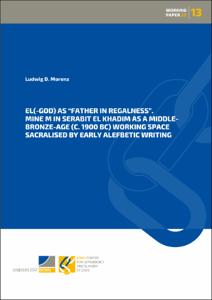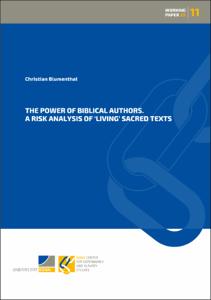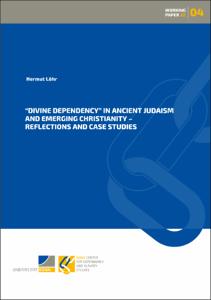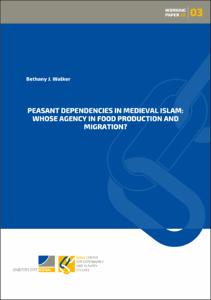BCDSS Working Papers
Recent Submissions
-
In the land of the apu: Cerro Llamocca as a sacred mountain and central place in the pre-Columbian Andes of southern Peru
Mader, Christian; Reindel, Markus; Isla, Johny; Behl, Martin; Meister, Julia; Hölzl, Stefan (2023-05-24)Cerro Llamocca is a mountain with a summit elevation of 4,487 m asl in the southern Peruvian Andes. This paper presents a first overview of recent archaeological and paleoenvironmental research in its vicinity, and introduces ... -
Prostitution / Servitude / Slavery: Picturing Female Dependencies in Seventeenth Century Amsterdam
Münch, Birgit Ulrike (2024-07)This working paper seeks to explore the concept of asymmetrical dependency from an art and cultural historical perspective. Prostitution and sex work are central domains in which female dependency was negotiated and ... -
Moving Workers: Historical Perspectives on Labour, Coercion and Im/Mobilities
Bernardi, Claudia; Müller, Viola Franziska; Vilhelmsson, Vilhelm; Stojić, Biljana; Marcon, Gabriele; Heinsen, Johan; Ressel, Magnus; Gunnlaugsson, Emil; Özbek, Müge; Rahi-Tamm, Aigi; Kussy, Angelina; Nail, Thomas (2023-10-04)This book explores how workers moved and were moved, why they moved, and how they were kept from moving. Combining global labour history with mobility studies, it investigates moving workers through the lens of coercion. The ... -
Transcending Boundaries: Rethinking Slave Agency in the Ottoman Empire Through Religious Conversion Practices
Wagner, Veruschka; Gökçe, Zeynep Yeşim; Abacı, Zeynep Dörtok; Allahverdiyeva, Turkana (2024-05)This article explores the religious conversion of slaves in the Ottoman Empire and the Crimea as a profound and transforming event in the lives of slaves. We will analyze the conditions, reasons, and consequences of ... -
El(-GOD) as “Father in Regalness”. Mine M in Serabit el Khadim as a Middle-Bronze-Age (c. 1900 BC) Working Space sacralised by Early Alefbetic Writing
Morenz, Ludwig D. (2023-09)This paper grew out of an archaeological field season conducted in southwestern Sinai by the Department of Egyptology at the University of Bonn during November and December 2022. It specifically discusses the social and ... -
Dependency at the Centre and Periphery of the Tibetan Empire: Sayings, Doings and Interagency
Doney, Lewis (2023-06)This paper presents a microhistory of ninth-century asymmetrical social relations in the centre and on the periphery of the Tibetan empire (ca. 600–850 CE), as well as relations between the periphery and the centre. ... -
The Power of Biblical Authors: A Risk Analysis of ‘Living’ Sacred Texts
Blumenthal, Christian (2023-06)New Testament authors claim immense (interpretive) power and generate strong asymmetrical dependencies between themselves and the communities they address. They are convinced that they have the resource of ‘salvation’, ... -
Slavery in Eighteenth Century Mongolia: Transactions in People and Notions of Property According to the Qanggin Banner Archives
Heuschert-Laage, Dorothea (2022-12)This paper investigates moments of transition in which people were forced into dependency, or had to change from one relationship of asymmetrical dependency to another. It is argued that these transitions were backed ... -
Dependency, Subjugation and Survival: A Working Paper on the Jaina Culture in Medieval Karnataka, South India
Hegewald, Julia A. B. (2022-12)This paper investigates the changing position of the Jaina religious community in the south Indian State of Karnataka in premodern times. From the early fifth century onwards, the influence of the Jainas in the region ... -
The Numerus Clausus Law of 1920: Asymmetrical Dependencies, and the “Twisted Road” of Hungarian Jews to Auschwitz
Bodó, Béla (2022-08)This working paper examines the impact of the infamous <em>numerus clausus</em> legislation of 1920, which limited the share of Jewish students at institutions of higher learning to their proportion of the population, on ... -
Die Entwicklung von Ämtern und Abhängigkeitsstrukturen im Frühchristentum
Hornung, Christian (2022-05)This Working Paper provides a window on Christian Hornung’s current research as part of the Cluster of Excellence “Dependency and Slavery Studies.” His research focuses on the history of early Christian offices and ... -
“Free Like Other Freeborn People” or Just Another Form of Dependency?: Questioning the Situation of Manumitted Slaves in Early Modern Istanbul
Wagner, Veruschka (2022-05)This paper aims to present some thoughts and research findings related to my ongoing project on Ottoman slavery and dependency. The project, entitled “Spatial and Social Mobility of Slaves from the Black Sea Region in ... -
Theorie und Methode der Analyse asymmetrischer Formen von Abhängigkeit: Eine (global)rechtshistorische Perspektive
Duve, Thomas (2022-05)This working paper aims to contribute to the transdisciplinary debates on how to analyze asymmetric forms of dependency at the BCDSS from the perspective of a legal historian inter ested in global legal history and working ... -
“Divine Dependency” in Ancient Judaism and Emerging Christianity: Reflections and Case Studies
Löhr, Hermut (2022-05)This paper provides insights into the author’s current project, which looks at “divine dependency” in texts of ancient Judaism (from the Second Temple period) and emerging Christianity. The first part identifies aims ... -
Peasant Dependencies in Medieval Islam: Whose Agency in Food Production and Migration?
Walker, Bethany J. (2022-03)Medieval feudalism, while it took different forms in different parts of the world, shared one common characteristic: the military, political, and economy foundations of society were constructed with peasant labor. The ... -
Embodied Dependencies and Valencian Slavery in the Sixteenth and Seventeenth Centuries
Filioli Uranio, Fabrizio (2022-03)The aim of this article is to investigate slavery in the Kingdom of Valencia in the sixteenth and seventeenth centuries. As we will see, slavery can be analysed in a perspective of both global history and micro-history, ... -
Anti-Vagrancy, Punishment and Labor Relations in the Context of the Abolition of Slavery in Brazil and the Portuguese Empire (1870–1910)
Terra, Paulo Cruz (2022-03)Focusing on the Brazilian and Portuguese Empire contexts, between 1870 and 1910, this text aims to investigate how the slavery abolition process affected the different historical definitions of what constituted vagrancy ...



















